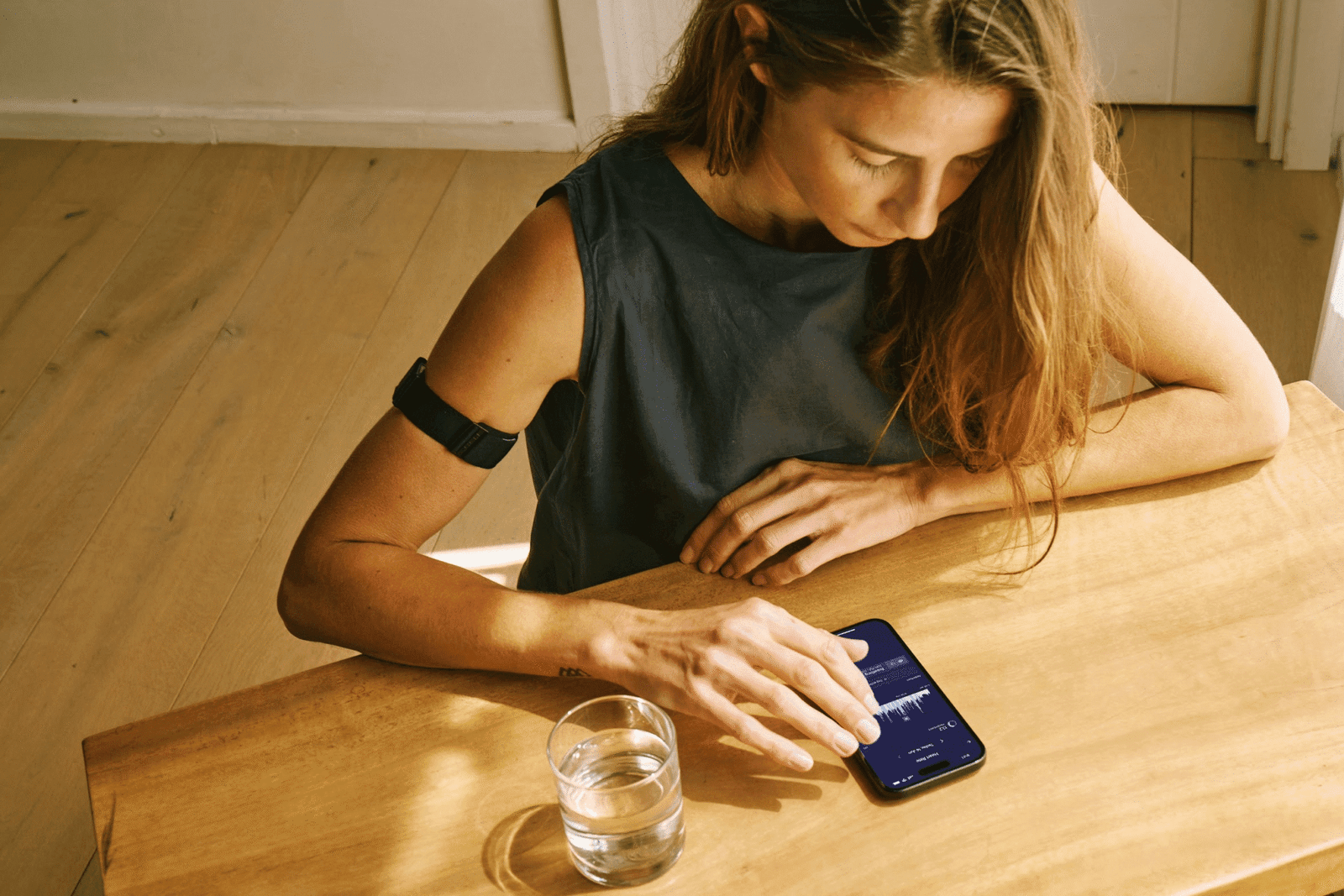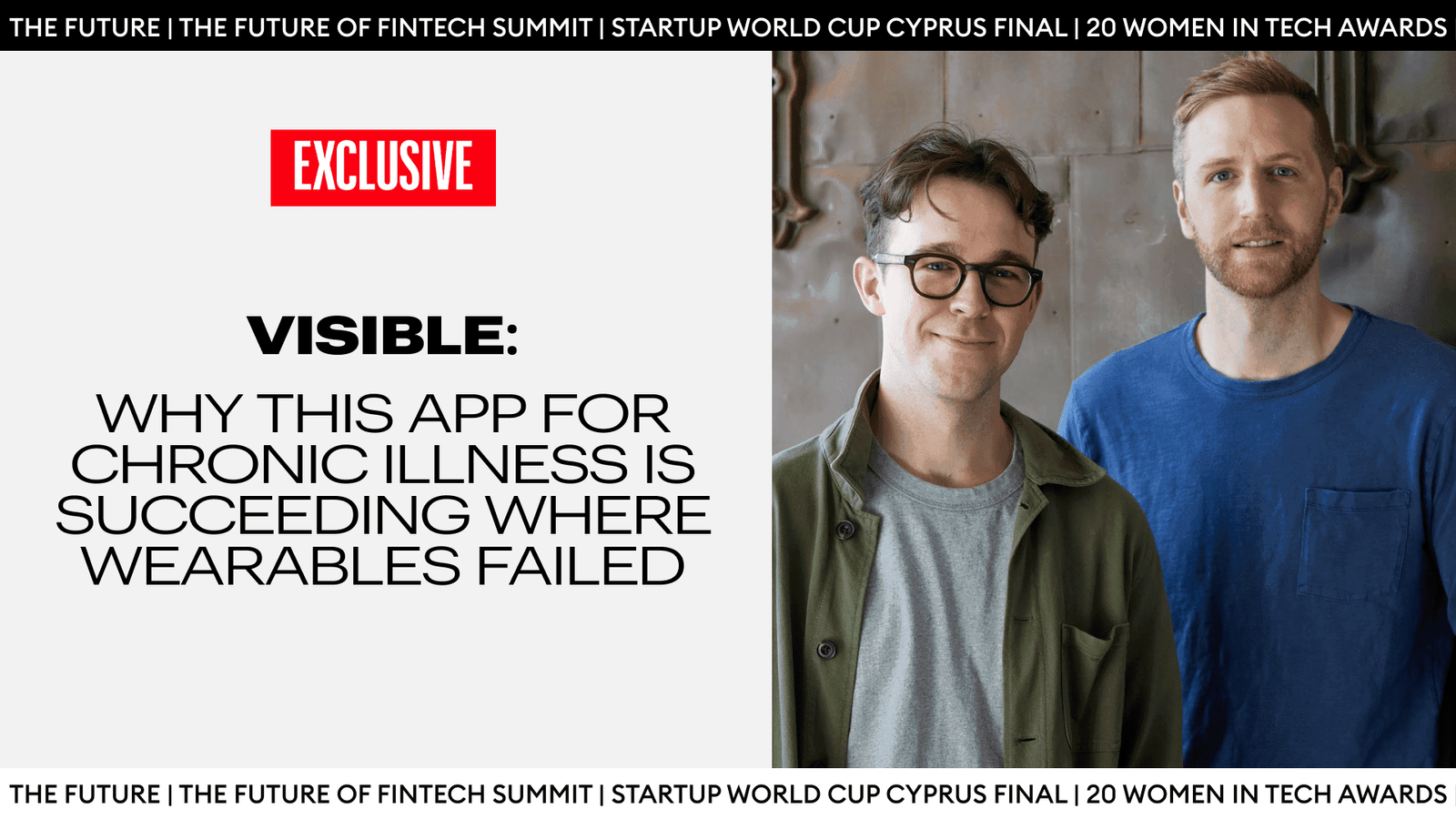Test results that come back “normal.” Doctors who can’t see what’s wrong. Symptoms that swing from manageable to crushing without warning. For people living with long COVID, ME/CFS, dysautonomia, or other chronic energy-limiting illnesses, being sick is only half the problem. The other is visibility: in clinical records, healthcare systems, and even among standard health tools.
Despite affecting millions of people worldwide, long COVID remains under-researched and underdiagnosed. Its symptoms are wide but can include fatigue, brain fog, breathlessness, chest pain, and post-exertional malaise (PEM). These illnesses often evade conventional diagnostics, and patients are left to manage unpredictable health patterns with little clinical support and very few tools built for their needs.
Follow THE FUTURE on LinkedIn, Facebook, Instagram, X and Telegram
That’s the gap a new kind of health tech is starting to close. Visible, co-founded by Harry Leeming
and Luke Martin-Fuller, isn’t another fitness tracker. Rather than encouraging users to optimize or push through, its app and wearable system help people pace: to recognize physiological warning signs, avoid overexertion, and manage their symptoms in real time.
The goal isn’t pushing limits. It’s about making those limits seen.
The Founder’s Story: Building While Burnt Out
Harry Leeming wasn’t recovering. After catching COVID in 2020, weeks turned into months of exhaustion, brain fog, and a heart rate that spiked from standing up too fast. The smallest exertion could leave him wiped out for days.
“I remember brushing my teeth and having to sit down halfway through it,” he told me. “That’s when I knew something was really wrong.”
There were no clear medical answers. It was early in the pandemic, and long COVID wasn’t yet fully recognized, let alone understood. Tests came back normal. Specialists shrugged, skeptical at best. Advice, if it came at all, was vague: rest, wait, try to reduce stress.
But online, Leeming found something more useful. In forums and support groups, people with ME or similar conditions, many of whom had been managing post-viral fatigue for years, were already sharing strategies that worked. That’s where Harry discovered pacing: a method of staying within your body’s energy limits to avoid triggering debilitating crashes.
It wasn’t new. But it was the first thing that made sense. And like most people trying to implement it, he had to find his own way to implement it into his recovery: spreadsheets, symptom logs, and a lot of trial and error.
“There were plenty of tools for people training for marathons,” he said. “But nothing for people like me. No system for managing illness day to day.”
That gap stayed with him. Not just the lack of answers, but the absence of tools: ways to track, understand, and manage the day-to-day reality of being unwell.
Over time, that idea became Visible.
Turning Pacing Into a Platform
Visible started small. Harry Leeming began by experimenting with heart rate variability (HRV) tracking, one of the few biometric signals that can offer insight into how the body is recovering. A 2024 paper in Scientific Reports found that lower HRV was linked to greater fatigue severity in long COVID patients, while other research has shown that tracking resting heart rate over time can help predict symptom flare-ups before they happen.
HRV tracking was already being promoted informally in ME/CFS communities as a rough proxy for overexertion, and Leeming saw potential in building a system around it.
The first version of Visible was basic: a data logger stored on a phone that captured the HRV readings once in the morning while the user was lying down. The readings were then processed to calculate a Stability Score, a single metric that provided an estimate of how well the autonomic nervous system was holding up under stress. A drop could indicate an early sign that a crash was coming.

In its current form, Visible offers two options for tracking: a free app and a premium wearable device. The free app, available globally, lets users log symptoms, sleep quality, and menstrual cycle during check-ins. It also uses the smartphone’s camera to measure heart rate and heart rate variability (HRV) by detecting subtle changes in fingertip coloration—an approach validated by research. “That’s able to give us the signals that we can then plot over time,” Leeming explained, “so we can see if medication or lifestyle is having an impact on your health.” The wearable device, currently available in the UK and US, adds 24/7 passive tracking for continuous data collection, reducing the need for active input from users. Both tools feed into the app’s Stability Score and are designed to prioritize ease of use, allowing patients to gather meaningful data without overwhelming effort.
Why Fitness Tech Fails Chronic Illness Patients
When Harry Leeming began trying to manage his long COVID symptoms, wearables seemed like an obvious starting point. But the tools on the market (Garmin, Fitbit, Apple Watch) weren’t designed with illness in mind.
“I was using a fitness tracker to try measure things, but it wasn’t designed for this. It was all geared around performance, steps and pushing yourself,”
he told me.
Mainstream wearables are built for healthy users focused on metrics like VO₂ max, calorie burn, or step goals, not people whose symptoms fluctuate, or whose health depends on staying within strict limits and recovery.
This isn’t just a case of devices being technically inaccurate. It’s a design intention mismatch. These tools were never built for the kind of detailed, low-variance, resting-state tracking that chronic illness demands.
“The standard approach in health tech is geared toward cardiovascular performance, but for people dealing with chronic illness, that can be harmful,” Leeming told me. “What we wanted to build was something that respects limits instead of pushing past them.”
That design mismatch shows up in the data. A 2023 scoping review in BMC Medical Informatics and Decision Making found smartwatch accuracy varied significantly across models. Heart rate measurements on the Apple Watch Series 6, for instance, could deviate by as much as 15%, while the Garmin Venu 2s showed inconsistencies even under resting conditions. A literature review from HIMSS flagged similar issues: wearable sensors often perform well in lab environments but fall short in real-world use. Behaviour-based interventions built on this data, as Frank et al. (2017) observed, frequently fail to support meaningful health improvements.
When devices ignore the data that is integral to the wellbeing of their user, in this case, people with COVID or ME/CFS, they don’t just mislead, they dictate which realities get recognized, and which get dismissed. By failing to account for energy variability and autonomic dysfunction, much of today’s health tech reinforces a model of health that marginalizes those who don’t fit within its performance-first framework.
Supporting Research, Structuring Care
Even with an estimated 65 million people globally affected (a number widely considered to understate the true scale of the problem), peer-reviewed studies remain in the low hundreds. Research into key areas like autonomic function, biomarker validation, and treatment outcomes often lacks the statistical strength or representativeness needed to produce reliable findings. The problem isn’t just lack of interest—it’s a lack of access. Most research teams simply don’t have the tools or patient data to study these conditions at the depth they demand.
Visible is helping change that.
“From the beginning, we didn’t just want to build a tool for individuals,” Leeming told me. “If people are already collecting this data for themselves, we wanted to make it easy for them to also share it in ways that move research forward.”
Making health data accessible to researchers is one part of the equation. The other is earning—and maintaining—users’ trust. The app includes two consent frameworks: one for basic usage and a second for users who want to share data with researchers. Participation in research is strictly optional, and users can opt in or out of individual studies through the app. Each project includes details on the research team, what data will be used, and why it matters.
“No data is ever shared without explicit permission,” Leeming told me. “We don’t bundle consent or sell information to third parties. That’s non-negotiable.”
Instead, users retain full control. If they choose to take part, their data is anonymized and encrypted before being shared with vetted researchers operating under institutional ethical review (IRB) protocols.
“We list every research group and what they’re studying,” Leeming explained. “Users can choose which ones to support—and revoke that permission at any time.”
This model is already producing legitimate research outputs. Collaborations include:
- Imperial College London: studying how menstrual cycles intersect with symptom patterns in long COVID.
- Mount Sinai Health System: analyzing biometric signals: HRV, resting heart rate, weather factors for their ability to predict flare-ups.
- And multiple projects examining the link between autonomic function disruptions and long COVID outcomes, adding systematically collected biometric data for more in-depth analysis.
Visible’s approach reflects the urgency and necessity of patient-led science. Many users have already spent years being dismissed or misdiagnosed. Contributing to research becomes a way to not just be seen, but to change what gets studied and how.
That urgency extends to healthcare systems, too. Visible is now developing ways to generate clinical summaries and share them with physicians, something many users already use when advocating for themselves in appointments. But the app wants to go one step further: to embed this data into clinical workflows through dashboards, integrations, and eventually, prescribing the app for remote symptom monitoring.
The implications go well beyond the app’s users. Long COVID and related conditions have major implications for public health, workforce participation, and healthcare expenditure. In the UK alone, over 1.9 million people report long COVID symptoms, with over 400,000 describing their daily activities as “limited a lot.” Many are of working age and previously healthy, sidelined by a lack of recognition and support for their symptoms. The resulting strain on labor markets, disability systems, and household income is significant. In the US, initiatives like NIH’s RECOVER programme have allocated more than $1.15 billion to long COVID research, reflecting both the scientific gaps and the socioeconomic cost of inaction.
Visible’s solution is a feedback loop where individual users can manage their condition, while their data, ethically collected and user-controlled, helps generate the data needed to advance knowledge and, in the long run, systems.
Tools like Visible aren’t just helping people manage symptoms. They’re helping them stay employed, stay engaged, and stay visible in systems that have long overlooked them.
Making the Invisible Visible: Cyprus and Beyond
Despite growing awareness of long COVID, ME/CFS, and dysautonomia, Cyprus still lacks dedicated services to diagnose or manage these conditions. Within the national GeSY healthcare system, care is limited, and coordinated, long-term treatment plans for chronic conditions are difficult to access.
But the core issue is a lack of local data. Biomedical research in Cyprus has historically focused on a narrow set of priorities: cancer, heart disease, diabetes, respiratory illness, and mental health. A 2018 study in Health Research Policy and Systems found that fewer than 10% of research outputs addressed clinical or policy-relevant gaps. As a result, conditions like long COVID remain largely invisible, not just in clinics, but in the national research agenda.
And Cyprus is far from alone. A 2020 review in the same journal pointed to an inherent global pattern: many diseases receive very little research attention not because they are rare, but because they are harder to commercialize, more prevalent outside high-income countries with little funding interest, or demand long-term investment with uncertain returns. Chronic, post-viral conditions are particularly vulnerable to this neglect.
Visible offers a way to fill some of these gaps. Its model supports individual patients while also generating structured health data that can be securely and ethically shared with researchers. It helps make overlooked conditions measurable, trackable, and visible not just to patients, but to the institutions that have historically failed to see them.
As Leeming put it:
“We’ve known for decades that infections can trigger chronic conditions… but these conditions have been largely overlooked by the healthcare system, leaving millions of people to manage their illness on their own.”
In contexts like Cyprus, where public awareness is limited and research funding does not reflect population needs, tools that collect patient experiences may be the only practical path to recognition. Without data, these conditions stay invisible. And without visibility, there’s no progress.














